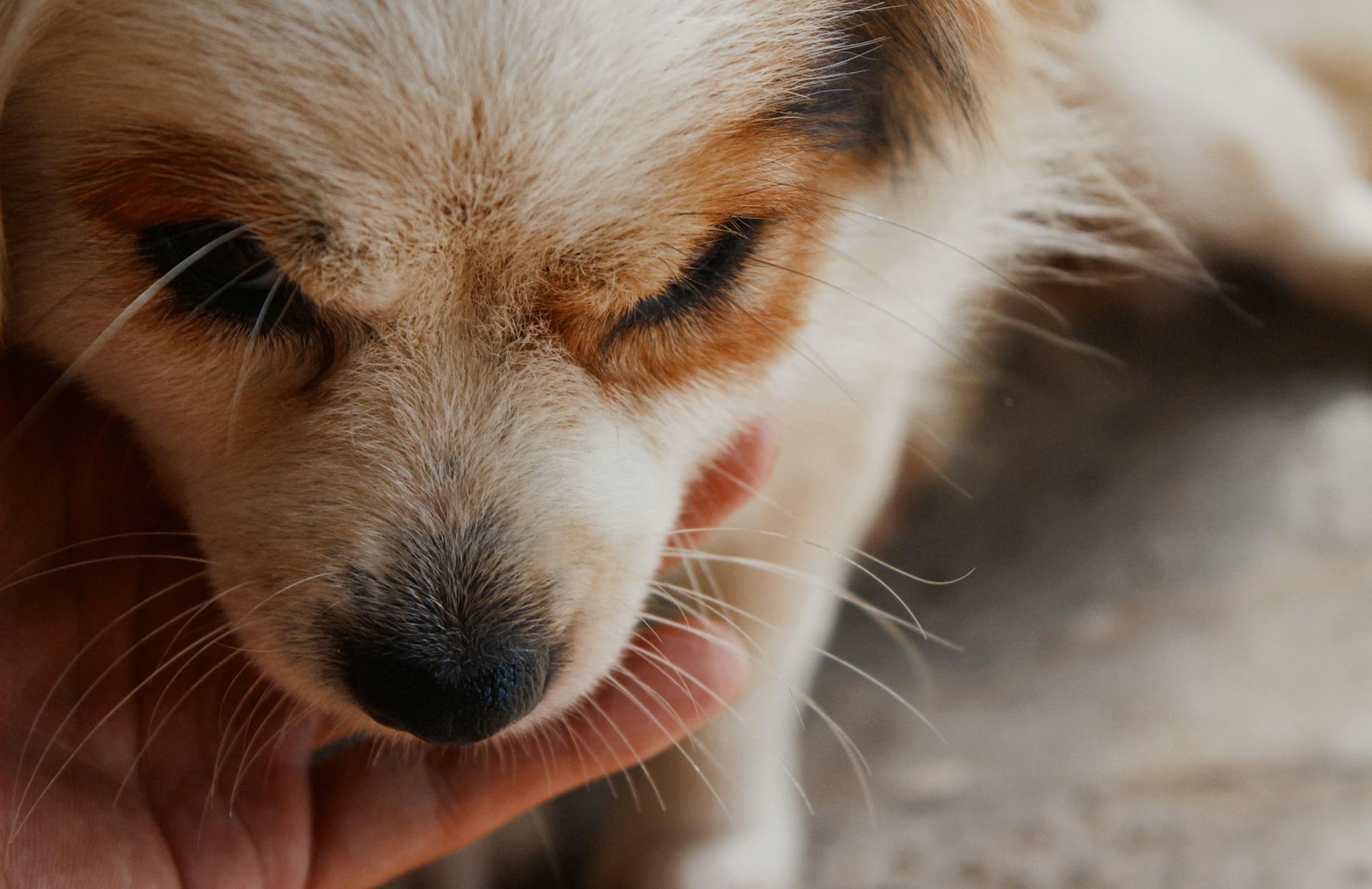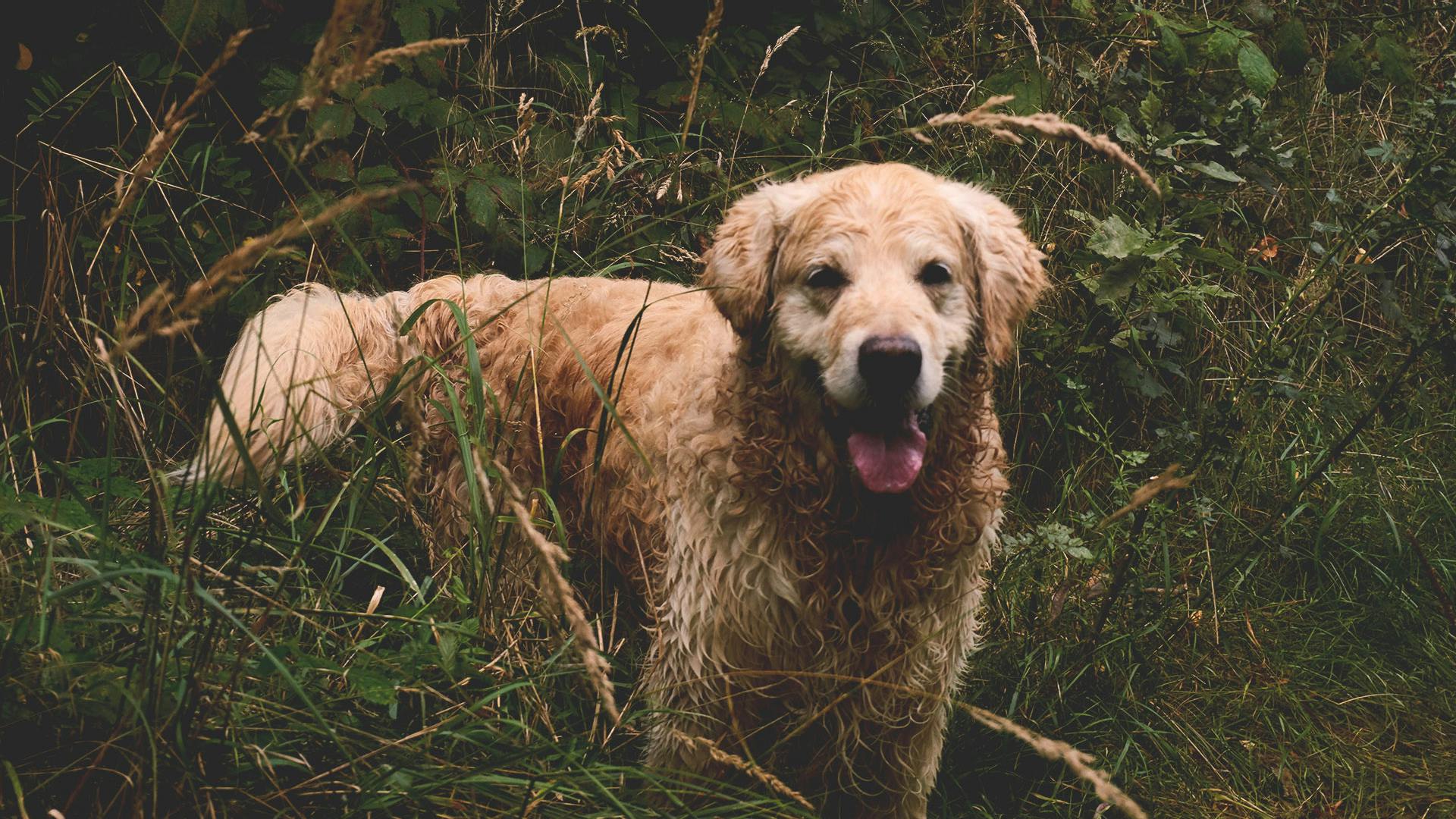
The Goldador is a cross between a Golden Retriever and a Labrador Retriever, making it a popular breed for families and first-time dog owners. This mix of two beloved breeds results in a loyal and friendly companion.
Goldadors are generally medium to large in size, with adults weighing between 55-75 pounds and standing between 20-24 inches tall. They have a short, easy-to-maintain coat that requires regular grooming.
Their friendly nature makes them an excellent choice for families with children, as they are patient and gentle.
Characteristics and Traits
A Goldador is a cross between a Labrador Retriever and a Golden Retriever, and they can inherit the characteristics of either parent or both. They are large dogs, with males weighing between 59-84 pounds and females weighing between 55-70 pounds.
Their height is typically between 22-24 inches, with a broad chest, long muzzle, and lengthy legs. They have floppy ears and a short-length, dense double coat that sheds moderately.
Goldadors are known for their friendly and outgoing personalities, inherited from their Labrador and Golden Retriever parents. They are highly intelligent and eager to please, making them highly trainable.
Here are some key characteristics of Goldadors:
Goldadors are generally good-natured, loving, and affectionate, making them a great addition to families. They require regular exercise and mental stimulation to prevent boredom and destructive behavior.
Colors
Colors are one of the most exciting things about Goldadors, and they can be quite varied. The Goldador's coat color is determined by its parents, with Golden Retrievers and Labradors both having a thick, double coat.
If your Goldador resembles its Labrador parent, you can expect a solid, single coat color. This can be one of three options: Black, Chocolate Brown, or Yellow. I've seen some beautiful Yellow Goldadors in my time, and they're just as sweet as they are sunny!
If your Goldador takes after its Golden Retriever parent, it will have a coat color that's more golden in tone. This can be Dark Golden, Golden, or Light Golden. These colors are stunning, and they really make the Goldador's coat shine.
Suggestion: Hungarian Vizsla Coats
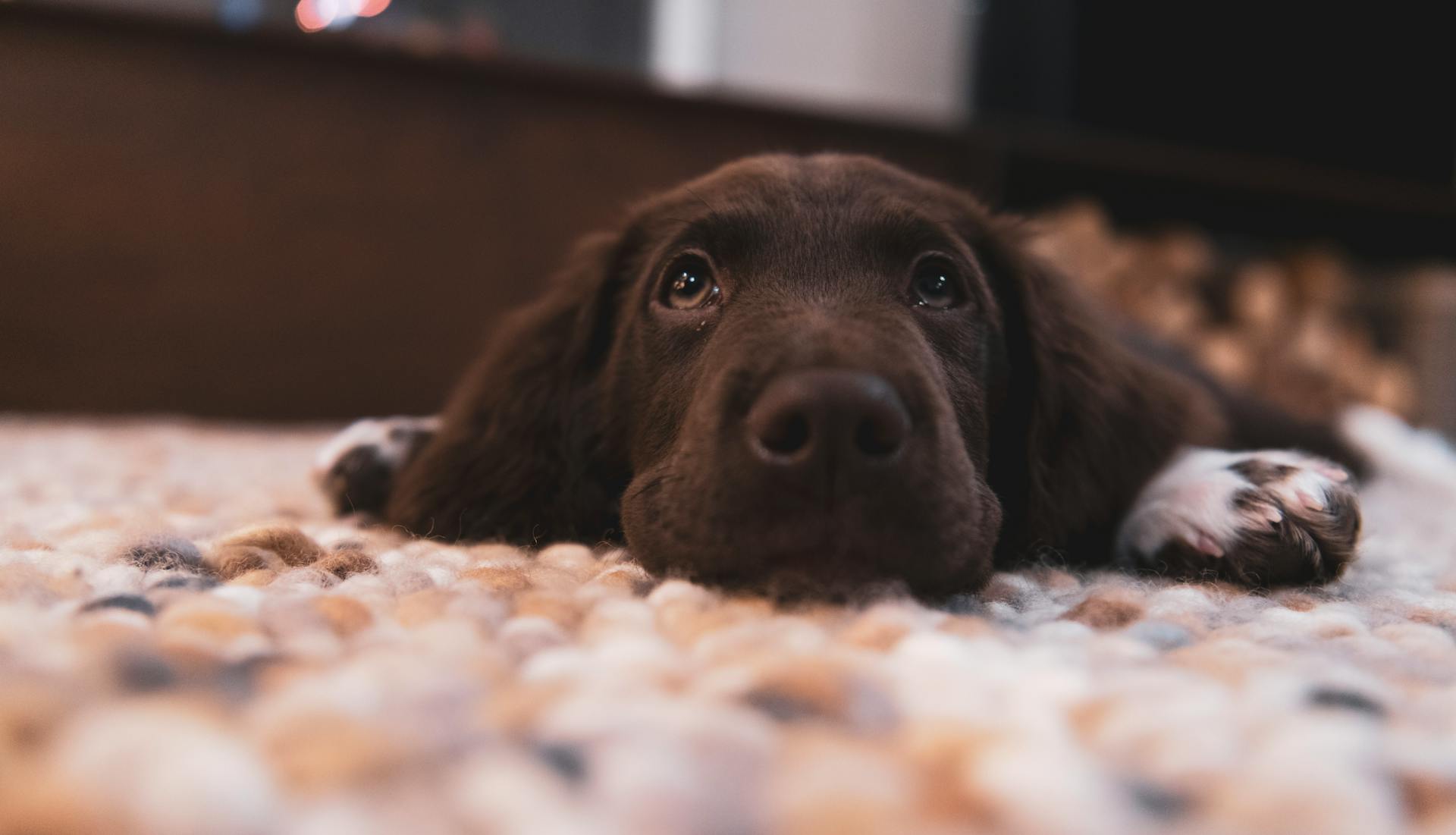
Here are the possible coat colors for a Goldador, broken down by parent influence:
- Black Goldador (Labrador influence)
- Chocolate Brown Goldador (Labrador influence)
- Yellow Goldador (Labrador influence)
- Dark Golden Goldador (Golden Retriever influence)
- Golden Goldador (Golden Retriever influence)
- Light Golden Goldador (Golden Retriever influence)
All Goldadors have brown eyes, which is a lovely touch to their overall appearance.
Coat Types
The Golden Retriever Lab Mix has a short length, dense double coat that's a medium shedder.
This double coat is made up of a soft undercoat and a water-resistant top coat, which is high maintenance.
The coat color is influenced by both parents, and it can be a single solid color that depends on whether it takes after the Lab or the Golden parent.
Curious to learn more? Check out: Red Field Golden Retriever
Temperament
The Goldador is a loving and affectionate breed that gets along with everybody. They're known to be friendly and outgoing, inheriting these traits from their Golden Retriever and Labrador parents.
They're not aggressive and are generally easy-going, making them a great addition to any family. With proper training, they'll be loyal and obedient, forming a strong bond with their family.
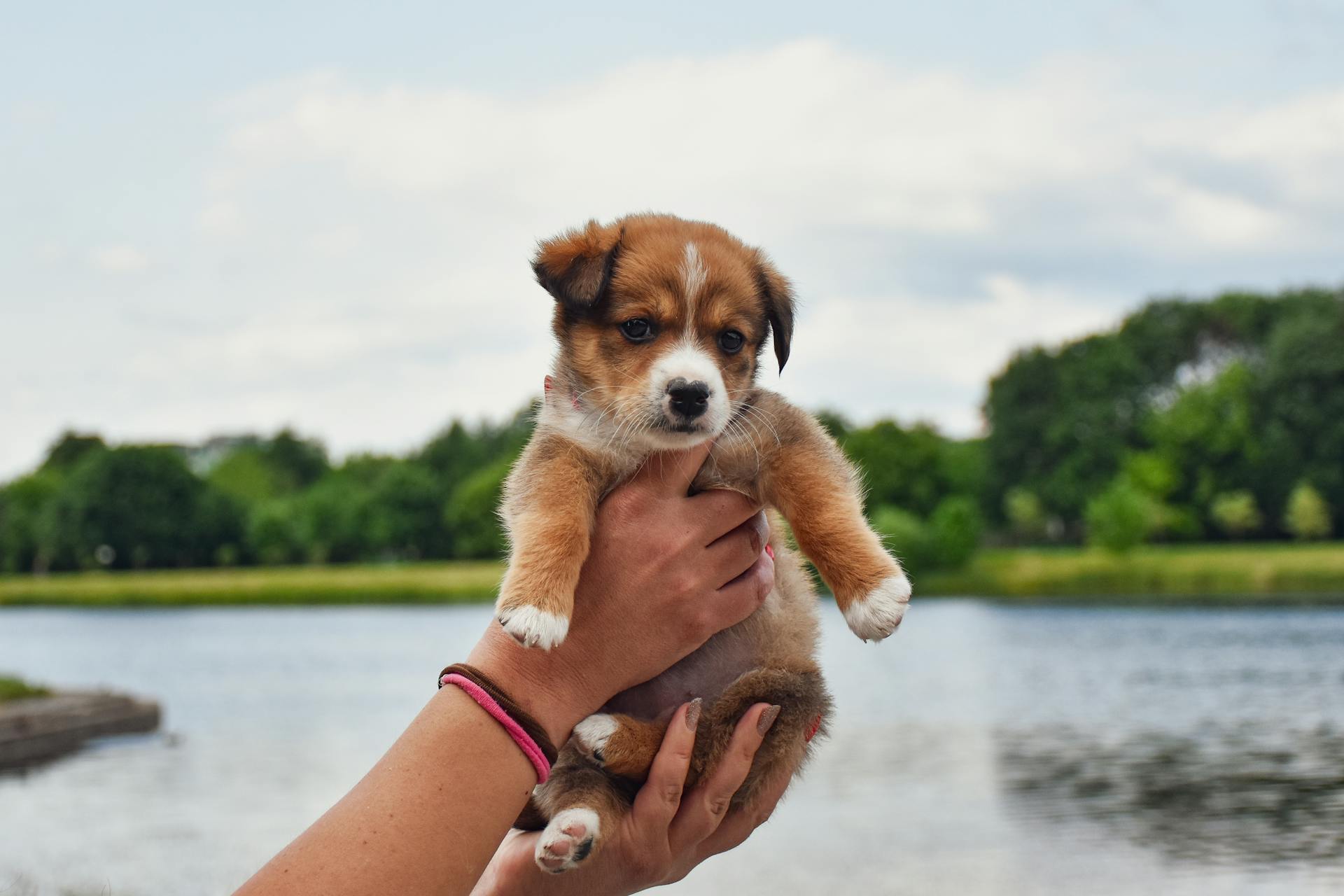
Goldadors need to be kept busy as they inherit a working and hunting instinct, which can make them adventurous if bored. If left alone for long stretches, they can get destructive out of boredom.
They respond well to praise and rewards, but harsh methods can be sensitive to their tone. Consistent leadership and guidance are key to their training and development.
Goldadors are highly intelligent and eager-to-please, making them highly trainable. They'll thrive on tasks and activities that challenge their minds and bodies.
They're natural swimmers and love the water, so a beach or river walk is ideal for them. They're happy to join you in the pool and may even try to "rescue" the kids until they realize it's just happy noise.
Health and Care
Goldadors are generally a healthy breed, but like all dogs, they can be prone to certain health issues. Hip dysplasia is a common problem in Goldadors, as it is in many large breeds.
Regular exercise and a balanced diet can help prevent or manage hip dysplasia. A Goldador's energy level is moderate to high, so they need daily walks and playtime to stay happy and healthy.
With proper care, Goldadors can live up to 10-12 years, which is a relatively long lifespan for a large breed dog.
Health Problems
As a Goldador owner, you'll want to be aware of the potential health problems that can affect your furry friend. Both Golden Retrievers and Labradors are prone to inherited health issues, so it's essential to find a breeder who has screened for these conditions.
PRA, hip and elbow dysplasia, and cataracts are just a few of the common health issues that can plague Goldadors. Your breeder should have proof of testing for these conditions in both parent breeds.
Some health issues, like cancer and bloat, can't be predicted, but there are steps you can take to reduce the risk. A varied diet and small, frequent meals can help decrease the risk of bloat.
Goldadors are at high risk of inheriting health problems from their parent breeds, so it's crucial to work with a responsible breeder who prioritizes health testing.
Life Expectancy
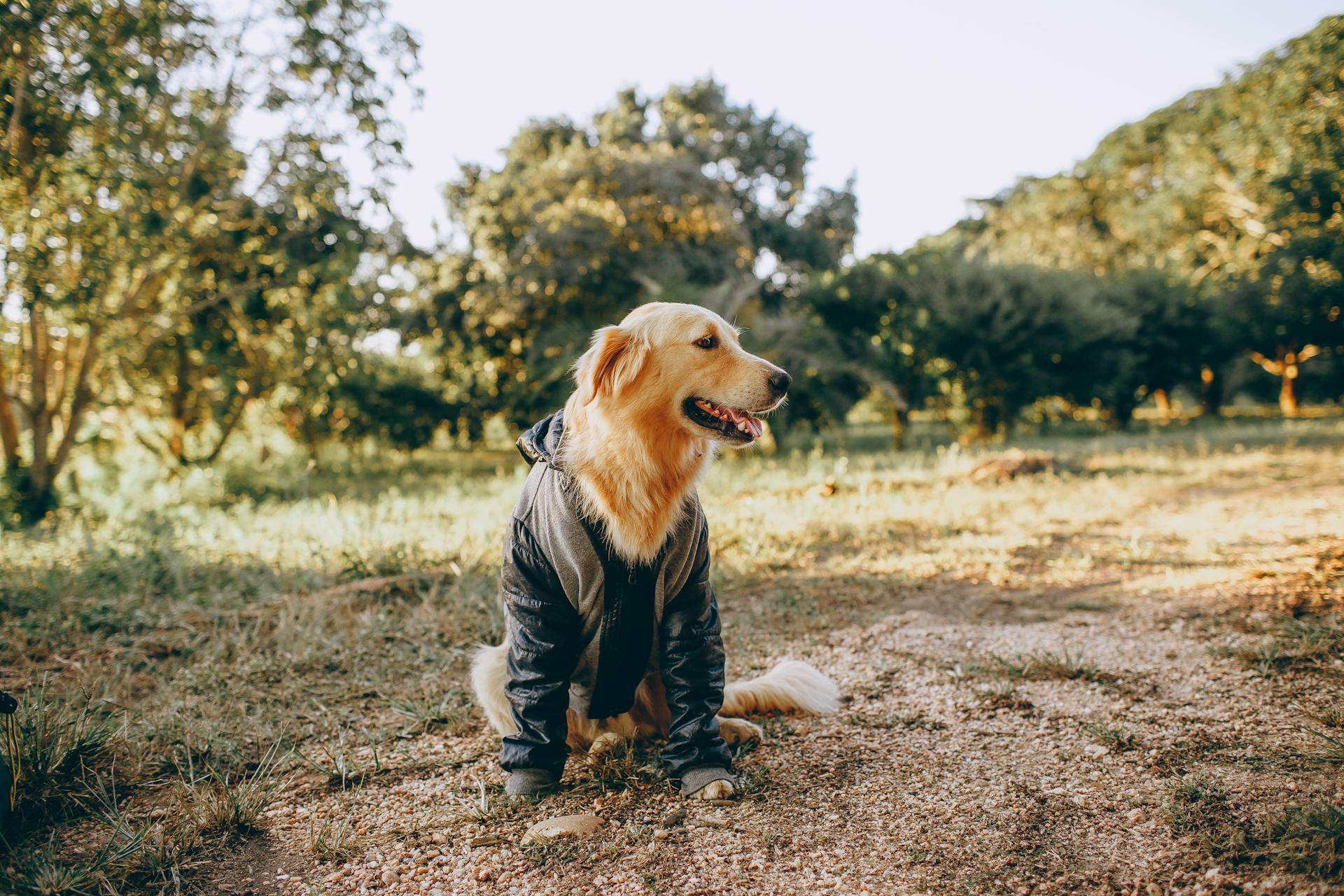
Goldadors are generally a healthy breed, but their lifespan can vary depending on their parent breeds. The average lifespan of a Goldador is 10 to 12 years.
Chocolate Labradors, which are often used as one of the parent breeds in a Goldador mix, have a 10% shorter lifespan than other Labs, which can impact the overall life expectancy of a Goldador.
You might like: Goldador Breed
Living Needs
Goldadors are extremely social dogs that thrive on interaction with their human family and other animals. They're perfect for homes with cats or other dogs, but early socialization is key to maintaining peace among pets.
These loyal companions see themselves as part of the family and don't like to be left alone for long periods without their humans. They'll happily join you on adventures like splashing around at the local lake or accompanying you on hikes.
Goldadors need regular exercise to stay happy and healthy, but it's essential to provide this exercise in a way that's suitable for their age. Puppies should avoid high-intensity exercise like long jogs until their bones have finished growing, around 18-20 months old.
While they prefer large, fenced yards, Goldadors are adaptable enough to handle apartment living as long as they get enough regular exercise.
Here's an interesting read: Long Coat Chesapeake Bay Retriever
Training and Behavior
Training a Goldador requires patience, consistency, and positive reinforcement. The breed is highly intelligent and eager to please, making them responsive to reward-based training.
Early socialization is crucial to help your Goldador get along with children and other pets. In fact, it's recommended to begin training and socialization with fun puppy training classes.
The Goldador's herding instinct can lead to them trying to take over and herd small children and smaller pets, so they need to be controlled. Positive reinforcement and small treats work well, but harsh discipline or negative punishment should be avoided.
To keep your Goldador stimulated, provide lots of exercise with challenging tasks. This breed is active and curious, and may want to investigate what's in the cupboards or on the dining table.
Here are some key characteristics to keep in mind when training a Goldador:
- Highly intelligent and eager to please
- Responds well to positive reinforcement and reward-based training
- Needs early socialization to get along with children and other pets
- May inherit the Lab's excitability and love of new faces
- Requires lots of exercise and challenging tasks to stay stimulated
If you're not going to use a professional dog trainer, it's essential to set strict boundaries and provide consistent training and socialization. This will help your Goldador develop good behavior and prevent unwanted habits from forming.
Ownership and Costs
As a Goldador owner, you'll need to consider the costs of owning one of these lovable dogs. The average cost of a Goldador puppy is around $1,000 to $2,000.
Their large size means they eat a lot, so be prepared for higher food bills. A Goldador can weigh up to 80 pounds, and they need plenty of high-quality dog food to keep them healthy and happy.
In addition to food costs, you'll also need to budget for regular grooming, which can cost anywhere from $30 to $90 per session.
See what others are reading: Goldador Doodle
Breeders
Good breeders aren't always expensive, but be wary of cheap litters.
Health tests, an awareness of the cancer gene, and temperament as a priority are key when finding a reputable breeder.
Your breeder should ask you lots of questions and be happy to answer all of yours.
Breeding stock should have a purpose in their family beyond making puppies.
Visit your potential breeder, check the environment your puppy lives in is clean and warm, and meet your puppy's mother.
Cost
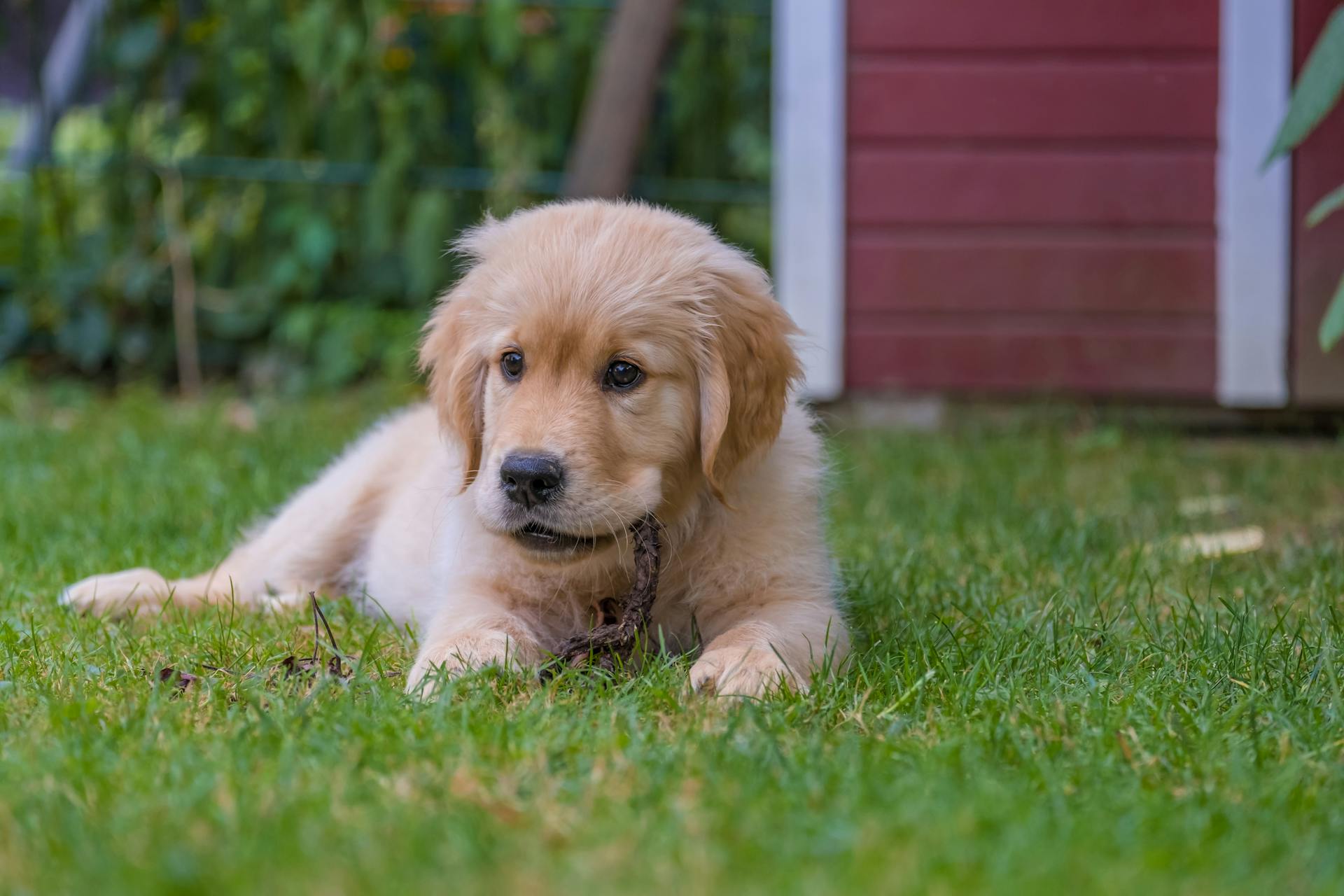
Buying a Golden Retriever Lab Mix puppy can cost anywhere from $600 to over $1200, depending on whether you're buying from a reputable dealer for breeding purposes.
Adopting from a rescue centre is a more affordable option, with costs averaging around $150.
Vet fees, accessories, and toys will add to your overall expenses, with food costs alone coming in at around $40-$50 per month.
Maintenance Breeds
These breeds require regular exercise and mental stimulation to prevent destructive behavior. They need long walks and plenty of attention to keep them happy and healthy.
If you're considering owning a breed like this, be prepared to spend time with them daily. They're not suited for sedentary owners or those with small living spaces.
A moderate shedder, these breeds need regular grooming to prevent matting and tangling. They're not a good fit for owners who don't enjoy regular cleaning and maintenance.
Here are some key maintenance requirements for these breeds:
History and Similar Breeds
The Goldador has a rich history that dates back to the 1960s, when breeders began crossing Golden Retrievers with Labrador Retrievers to create a loyal and intelligent companion dog.
These early Goldadors quickly gained popularity as family pets due to their friendly and outgoing personalities, which are inherited from their Golden Retriever ancestors.
In terms of physical characteristics, Goldadors often inherit the short coat of their Labrador parent, making them a low-maintenance choice for busy owners.
Their intelligence and trainability also make them a popular choice for families with children or for first-time dog owners.
On a similar theme: Golden Rottie
Breed History
The Golden Labrador, also known as the Goldador, has a rich breed history that dates back to the 1700s. The Labrador Retriever originated in Canada as a fish retriever for fishermen.
The Labrador Retriever's popularity spread to England in the 1800s, where they were used as retrievers for the nobility during hunting outings. They were recognized by the English Kennel Club in 1903 and the American Kennel Club in 1917.
The Golden Retriever, on the other hand, was bred in the Scottish Highlands in the late 1800s to be a hunting dog. Lord Tweedmouth was responsible for creating this breed by combining several types of dogs.
The Golden Retriever's keen sense of smell and boundless energy made them ideal for retrieving waterfowl and small game. They are now used in a wide range of activities, including hunting, tracking, detection work, and as guide dogs for the blind.
On a similar theme: Deutsch Drahthaar Hunting
Similar Breeds
The Chow Chow is a unique breed, but it's not the only one with a similar history and characteristics. The Shar-Pei, for example, was also developed in China to guard and hunt.
The Shar-Pei has a distinctive wrinkled coat, similar to the Chow Chow's rough coat. This feature is a result of their shared ancestry from the same region.
The Akita, another breed with a similar history, was originally bred in Japan to hunt large game. Its size and strength are similar to the Chow Chow's.
The Kuvasz, a Hungarian breed, also has a similar protective instinct, making it a great companion for families.
A unique perspective: Shiba Inu Coat
Frequently Asked Questions
How to tell if your dog is a Goldador?
To identify a Goldador, look for a dog that's a medium to large size, typically between 21-25 inches long and 55-80 pounds, with a black or brown nose and eyes. If your dog matches these physical characteristics, it may be a Goldador - learn more about this breed and its characteristics.
Featured Images: pexels.com
